Saab JAS 39 Gripen
Sweden
Advanced multi-role combat aircraft
|
|
F |
ollowing the cancellation of the Saab B3LA light – attack/advanced trainer project in 1979, Saab began development of the JAS 39 Gripen (gryphon) as an advanced lightweight multi-role successor to the Viggen. The JAS designation (Jekt Attack Spaning – fighter, attack, reconnaissance) underlined the fact that one aircraft (and one pilot) would be able to undertake all the combat tasks of the mission-specific Viggen family. The Gripen was designed to carry the advanced Ericsson PS-05/A multi-mode radar, ntegrated with the D80 mission computer. The cockpit featured the Ericsson EP-17 display system with three monochrome screens and a wide-angled HUD. The Gripen uses a highly – developed version of Sweden’s tactical airborne datalink system that allows rapid real-time exchange of complex mission data between aircraft and ground stations. Power was supplied by the Volvo RM12 turbofan, an improved licence – built version of the General Electric F404. Above all the Gripen was designed to be rapidly deployable and easily maintainab e. It was intended to use Sweden’s Bas 90 system of disoersed 800-m (2,624-ft) long roadstrips, and to be re-armed, refuelled and maintained in the field by a team of just five ground personnel.
The two-seat JAS 39B was drawn up as a trainer, but it wiil be fielded as a fuily-opera tionai mission – specific aircraft, perhaps with a dedicatedSEAD
Five JAS 39A prototypes were built, with the first flying on 9 December 1988. The first production JAS 39A Gripen flew on 16 December 1992 The development programme was slowed by the loss of two aircraft in 1989 and 1993. These incidents led to a redesign of the Gripen’s pioneering digital fly-by-wire system.
The Gripen was declared fully operational with the lead Swedish unit, F7 Wing, on 1 Movember 1997. A second squadron at F7 followed on 30 December 1998. Deliveries to the second Gripen wing, F10, are now underway. The Swedish air force will acquire a total of 204 Gripens, including 28 two-seat combat-capable JAS 39Bs. Sweden’s Gripens are being delivered in three batches, each with improving levels of capability.
The ultimate Batch Three evolution (designated JAS 39C and JAS 39D) will be delivered from 2003 to 2007. These 64 aircraft will have the EP22 full colour cockpit with enlarged displays, air-to-air refuelling capability, upgraded D96 computer systems. Future Gripen upgrade options include a re-engining plan and conformal fuel tanks to extend range. In 1998 South Africa ordered 25 Gripens which wiil be equivalent to Sweden’s Batch Three aircraft, tor delivery beginning in 2007.

|
UK/France
![]() Ground attack and reconnaissance aircraft
Ground attack and reconnaissance aircraft
|
|
D |
esigned to meet в 1965 joint Anglo-French specification for an advanced trainer, the SEPECAT Jaguar was transformed into a potent iow-levei all-weather fighter-bomber The first prototype flew on 8 September 1968. The RAF received 200 Jaguars, comprising 165 single-seat GR. Mk 1s {Jaguar S) with Ferranti LRMTS in a re-profiled nose and a tai – mounted RWR and 35 T. Mk 2 trainers (Jaguar B), all fitted with a sophisticated NAVWASS nav/attack system. They equipped a three-squadron Wing at Coitishall, operating in the conventional attack and reconnaissance roles, and with an out-of-area, rapid reinforcement commitment. The Jaguar also equipped a four-squadron Wing at RAF Bruggen in Germany {with a further recce unit at RAF Laarbruch) until 1988, with an additional nuclear strike commitment.
The RAF’s Jaguars received more powerful Adour Mk 104 engines from 1978-84, while the GR. Mk 1A/T. Mk 2A upgrade added a FIN1064 I NAS to 75 single-seaters, and 14 trainers. The aircraft also received AIM-9G Sidewinders, AN/ALE-40 flare dispensers, Phimat chaff/flare dispensers and AN/ALQ-101 jamming pods. For Operation Granby in 1991, the RAF’s Jaguars received defensive systems improvements, overwing AlM-9Ls, CRV-7 rockets and CBU-87 cluster bomDS. Since 1994, the surviving Jaguars been upgraded (to GR. Mk ЗА standards} adding GPS, TERPROM, the TIALD laser designator, an advanced NVG-compstible cockp t,
helmet mounted sight and a sophisticated new mission planner. They are due to serve unti 2008- 2009, and perhaps even longer.
The French Armee de Г Air received 160 single – seat Jaguar As and 40 Jaguar E trainers with more austere avionics. Some had an undernose TAV-38 laser rangefinder, and all had an OMERA 40 vertical camera. The French Jaguars equipped EC.7 (operating in the attack and, until 1991, strike roles), EC.11 (with out-of-area and defence suppression commitments) and one escadron of EC.3. The surviving French Jaguars, still powered by the original Adour 102, will be withdrawn by 2004. The aircraft now use ATLIS laser designator pods, AS30 missiles and various LGBs. French Jaguars have seen action in Mauritania, Chad, the Gulf and the Balkans.
The Jaguar International (based on the RAF variants) vvas sold to Ecuador, India, Nigeria and Oman. India also builds the type under licence, (93 so far. with production continumg). India’s Jaguars include some Jaguar IM maritime attack aircraft, with Agave radar and BAe Sea Eagle missiles.
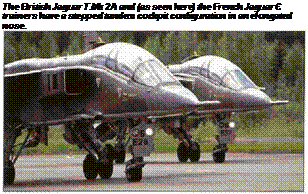 Specification: SEPECAT Jaguar A Powerplant: two 32.49-kN (7,305-lb! Rolls – RoyceAurbomcca Acour Vlk 102 furbcfan Dimensions: wing span 8.59 m!28 ft 6 in); length 17.53 nr. (57 ft Б’/. in) including probe; height 4.89 m (16 ft Kin)
Specification: SEPECAT Jaguar A Powerplant: two 32.49-kN (7,305-lb! Rolls – RoyceAurbomcca Acour Vlk 102 furbcfan Dimensions: wing span 8.59 m!28 ft 6 in); length 17.53 nr. (57 ft Б’/. in) including probe; height 4.89 m (16 ft Kin)
Weights: empty equipped 70Г.0 kg (15,432 lb); maximum take-off 15700 kg I34.G12 lb) Performance: maximum level speed at 10975 m 135,000 :t) ІБ99 kmh (1.056 mph); combat radius 852 km 1530 miles) on e li – c-hi attack mission with internal fuel Armament: two DEFA 553 ЗП-mm cannon with 150 yog; maximum load of 4536 kg Г 0,006 Ih) on lour underwing and one centreline hartfpoinrs
|
|
C |
hina’s J-8 (NATO code name ‘Finback’! originated from a 1964 PLA requirement for an indigenous fighter with performance superior to that of the MiG-21. Shenyang’s twin-engined design incorporated a scaled up configuration of the MiG-21’s ‘tailed delta’, with a ranging radar in the intake centre – body, similar to MiG’s own Ye-150. The first of two prototypes flew on 5 July 1969. These undertook a protracted flight test programme (lasting 10 years), which was interrupted and delayed by political upheaval. The resulting J 8 was armed with a single 30-mm cannon and up to four PL-2 AAMs.
The improved J-8 I ‘Finback-A’ was designed as an ail-weather fighter, and featured a new Sichuan SR-4 radar in an enlarged intake centrebody, some aerodynamic refinements and a two-piece canopy with a fixed windscreen. It introduced a twin-barrelled 23-mm 23-III cannon, and provision for four rocket pods as an alternative to the AAMs. A prototype flew on 24 April 1981. J-8 and J-8 I production totalled about 100 aircraft, and some J-8 Is have been converted to serve in the reconnaissance roie, with an undernose sensor package..
Development of the further improved J-8 II ‘Finback-B’ began in May 1981, leading to first flight of a prototype on 12 June 1984. The J-8 II
The original J-8’s MiG-21 heritage is clear to see in this line-up of‘Finback-As’. Despite its limited capability the J-8 A is still in PLAAF service.
introduced a nose-mounted rada’, and relocated new lateral air intakes for its 69-kN (15,430 lb) WP-138 turbojets and a ventral folding fin. An export F-8 IIM version has been offered, with a pulse-Doppler look-down radar and digital avionics, including a HUD and two HDDs, but this has not yet won any orders.
On 5 August 1987 Grumman received a contract to design, develop and test the Peace Pearl avionics upgrade for the J-8 II. This introduced a modified AN/APG-66 radar, giving compatibility with BVR SARH missiles like the AIM-7. The aircraft would also have received a modem HUD, з US ejection seat and an INS, and a bubble canopy and frameless wrap-around windscreen. However, the Tienanmen Square massacre led to an immediate halt on work on the project,
J-SIIs of the PLA Air Force and PLA Navy Air Force are being upgraded with new RWRs (introduced in the second production block), and some are fitted with fixed inflight refuelling probes as J-8 IVs (also referred to as the J-8DI They are also being equipped with the PL-8 ДАМ (a copy of the Israeli Python III). The J-8 hit the headlines in April 2001 when one was lost after a collision with a US Navy EP-3E over the South China Sea,
 Specification: Shenyang J-8 II ‘Finback-B‘ Powerplant: two 65.90-kN (I4,815-lb| Liyartg (LMC) Wapen-ІЗЛ II afterburning turbojets Dimensions: wing span 9.34 m (30 ft 8 in); length 21.59 m (/0 ft’ 0 in) including probe: height 5,41 m (17 ft 9 in)
Specification: Shenyang J-8 II ‘Finback-B‘ Powerplant: two 65.90-kN (I4,815-lb| Liyartg (LMC) Wapen-ІЗЛ II afterburning turbojets Dimensions: wing span 9.34 m (30 ft 8 in); length 21.59 m (/0 ft’ 0 in) including probe: height 5,41 m (17 ft 9 in)
Weights: empty 3820 kg 121.649 lb): maximum take-off 17800 kg (39,24? lb) Performance: maximum level speed 2338 kmh (1,453 mph); maximum rate of climb at sea level 12000 rn (39,370 ft) per minute, service ceiling 20200 m (65,275 ft), ferry range 2200 km (1,367 miles); combat radius 800 km (497 miles) Armament one ventral Type 23-3 twin – barrelled 23 mm cannon with 200 rounds; ordnance Pt-28, PL-8 and PL-10 missiles
|
|
S |
ikorsky developed the S-61 Sea King to replace its previous S-58 design, combining dual ASW hunter/killer roles in a single airframe, The prototype YHSS-2 first ‘lew or 11 March 1959 and was followed by 245 production SH-3As for the USN. The primary sensors were an AQS-10 dipping sonar and an APN-130 search radar; in the ‘killer’ role the SH-3A carried two torpedoes or depth charges.
The 74 SH-3Ds that followed introduced uprated T58-GE-10 engines. AOS-13A sonar and APN-182 radar The SH-3G conversion modified 105 SH-3A/Ds to set as general-purpose rescue platforms and transports, Some 116 SH-3A, SH-3D, SH-3Gs were later converted to perform the inner-zone anti-submarine mission as SH-3Hs with AQS-13B dipping sonar, LN66HP search radar, chaff dispensers and an ASQ-81 towed MAD bird. ESM equipment end the radar were later replaced by a modern tactical navigation suite and improved sonobuoy and sonar processing capability.
By 2001 only a handful of SH-3Hs remained in US Navy service, strippeo of their ASW equipment and used for utility and SAR duties by second line units, along with small numbers of UH-3A and VH-3A utility transports. The VIP-dedicated VH-3D is also still m service, used as a Presidential transport by Marine Corps squadron HMX-1.
Of the military S-6lRs, which featured rear-loading ramps and a more conventional, non-boat-hulled fuselage, the USAF’s CH-3C. CH-3E, and probe-
equipped HH-3E ‘Jolly Green Giants’ have all been retired, as have the US Coast Guard’s similar HH-3F Pelicans. Two are still flown in Argentina, however, and about 33 Agusta-built AS-61 R Pelicans remain operational in the SAR role in Italy. Some of these aircraft have been armed and upgraded with FURS for the combat SAR role.
The basic Sikorsky-built S-61/SH-3 Sea King was exported to a number of countries, and remains operational in Argentina. Brazil, Denmark, Namibia and Spain. Licence manufacture was under-taken by Canada, Italy and Japan. Canada’s surviving CH-124As have been updated for continued ASW service, but are now overdue for replacement. About 48 of the Japan Maritime Self Defence Force’s 100 Mitsubishi-built HSS-2, HSS-2A and HSS-2B helicopters are still operated on ASW, utility and SAR tasks, Agusta-built ASH-3D and ASH-3H ASW, logistic, and VIP transport derivatives for a number of customers, and they remain operational in Argentina, Brazil, Egypt, Iran, Iraq, Italy, Libya, Malaysia, Peru, and Venezuela.
Only smalt numbers of H-3 Sea Kings remain in US Navy service today, serving largely as base SAR and utility transport aircraft
Specification: Sikorsky S-61 (SH-3H ) Powerplant:two 1O44-kW(I.4O0-hp|
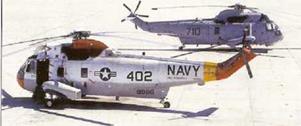 General Electric T58-GE-10 turboshafts Dimensions: main rotor diameter 18 90 in {62 ft m|, length overall, rotors turning 22.15 m (72 ft 8 in), fuselage 16.69 m(54 ft Я ir. J; height overall 5.13 m (16“ft10in|
General Electric T58-GE-10 turboshafts Dimensions: main rotor diameter 18 90 in {62 ft m|, length overall, rotors turning 22.15 m (72 ft 8 in), fuselage 16.69 m(54 ft Я ir. J; height overall 5.13 m (16“ft10in|
Weights: empty 5601 kg 112.350 lb); maximum take-off 9526 kg (21.000 lb) Performance: maximum level speed 267 kmh (166 mph); economical cruising speed 219 kmh (136 mph); maximum rate of climb at sea level 670 m (2,200 ft) per minute; service ceiling 4480 m (14,700 ft); hovering ceiling 3200 m (10.500 ft! IG£ and 2500 m (8,200 ft) OGC; range 1005 km (625 miles)

 |
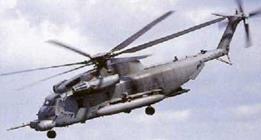 |
The Sikorsky CH-53 (Model S-65) heavy-lift helicopter first flew in prototype form on 14 October 1964 and, as the CH-53A Sea Stallion, it became the USMC’s principal heavy-iift helicopter in Vietnam, entering service in 1965. The CH-53D introduced uprated engines and a revised interior for increased troop accommodation. In the air assault role, it carried 55 troops or 3630 kg (8,000 lb) of cargo internally. Four USMC units (all in Hawaii) operate the surviving 45-50 CH-53Ds today. S-65s were exported to Austria (two S-65C-2 or S-650 aircraft, later sold to Israel), West Germany (112 CH-53Gs) and Israel (about 40 S-65C-3s and ex – USMC CH-53As). 30 of 38 surviving Israeli CH-53s are undergoing the Yasur-2000 upgrade, which adds new EW and cockpit systems.
The RH-53D was a US Navy mine sweeping variant, able to tow a mine countermeasures ‘sled’, and introduced uprated engines and an optional IFR probe and sponson tanks. Now withdrawn by the US Navy, two remain operational in Iran.
The first-generation H-53 remains active with the USAF. The service has retired its early HH-53B/53C SAR platforms and CH-53C transports have gone, but the type remains active in the CSAR role. The HH-53H Pave Low til introduced APQ-158 terrain-
The Pave Low t/ is a special-forces dedicated infittration/exfiitration helicopter, which has take over the combat search and rescue rote for the USAF.
The three-engined CH-53E Super Stallion is the US Marines’ primary heavylift helicopter. It can carry 55 equipped troops or 14545 kg (32,000 lb) of cargo
following radar. LLLTV, a FLIR turret, and other improvements, and led to the current MH-53J Pave Low III Enhanced This has uprated engines, TER, FLIR, NVG, RWRs, IR jammers, chaff/flare dispensers, GPS, IFR probe, external tanks, titanium armour and provision for three door/rear ramp – mounted 7.62-mm Miniguns. The fleet are now being upgraded further to Pave Low IV standards, with EFIS cockpits and improved defensive aids. A handful of earlier variants are used for training.
The improved, three-engined CH-53E Super Stallion (S-80) variant flew in prototype form on 1 March 1974, and introduced a seven-bladed main rotor, a lengthened airframe and fuselage sponsons as well as the third engine,. IOC was achieved in 1981 and the type now forms a vital part of USMC amphibious operations. The VIP-configured VH-53E serves with HMX-1. In 2000 Turkey ordered eight S-80E (CH-53E) transports.
The current CH-53E-based MH-53E Sea Dragon features enlarged fuselage sponsons with increased fuel capacity and modernised mine countermeasures systems. A total of 46 was delivered to the US Navy to replace the RH-53D, equipping two squadrons. The JMSDF operates 11 similar S-80M-1S.
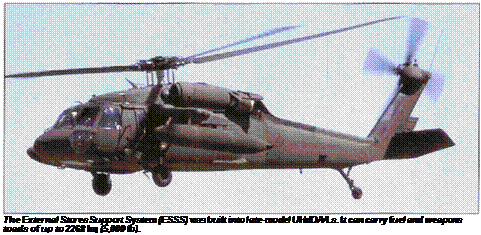 |
Sikorsky’s S-70 design was developed to meet the US Army’s 1972 requirement (or a utility/ tactical transport helicopter to replace the UH-1, offering far better performance, crashworthiness and all round survivability, The YUH-60A prototype first flew on 17 October 1974 and featured a broad, squat cabin for one crew chief/door gunner and 11 troops A production UH-60A Black Hawk first flew in 1978, and the type entered service in June 1979. The cheaper UH-60L (delivered from 1989) has uprated engines and other improvements.
Other US Army models include the EH-60C Quick Fix battlefield jamming system variant, which has two tailboom dipole antennas. A UH-60C command post is under development. The Army has a number of dedicated medevac UH-60Q Dustoff Hawks, and converted MH-60A and MH-60L ‘Velcro Hawks’ with FLIR, extra nav/comms, auxiliary fuel tanks and Miniguns for special operations support, and rocket-armed AH-60L ‘Direct Action Penetrators’ The definitive, new-production Special Operations MH-60K has TFR, FUR, pintle – mounted 0.50-in machine-guns, ESSS wings for fuel tanks, IFR probe, HIRSS, comprehensive comms/nav equip-ment, and defensive warning receivers and countermeasures. The US Army hopes to procure at least 1,400 UH-60A/L models, and is upgrading many to Enhanced Black Hawk standards. The USMC use nine VH-60IM White Hawks in the VIP transport role
Export models (sometimes designated as S-70As) are in widespread service worldwide, including Argentina, Australia, Bahrain, Brazil, Brunei, Chile, China, Colombia, Egypt, Hong Kong, Israel, Jordan, Malaysia, Mexico, Morocco, the Philippines, Saudi Arabia, Taiwan and Turkey. Licence-production is undertaken in South Korea 1UH-6OP1 and Japan (UH-60J)
The USAF also uses the type for SAR and CSAR. The planned HH-60D/E Night Hawk was cancelled, and instead the USAF pursued a three-phase procurement process, the Phase One UH-60A Credible Hawk has an IFR probe, provision for additional fuel and door guns. The Phase Two MH-60G Pave Hawk added new avionics (radar, GPS, INS, secure comms equipment and full countermeasures) and Phase Three added a HUD and FLIR. Sixteen special operations MH-60G support helicopters (with 0.50-in machine-guns) retained the MH – designation prefix, but aircraft with Phase Two avionics and lower calibre door weapons were re-designated as HH-60Gs.
![Saab JAS 39 Gripen Подпись: Specification: Sikorsky UH-60A Po werplant two 1151 -kW (1,560-hp) General Electric T700-GE-700 turboshafts Dimensions: main rotor diameter 16.36 m (53 ft 8 in): length overall, rotors turning 19 76 m |64 ft 10 in), fuselage 15.26 m 150 (t % in): height overall 5.13 rn|16 ft 10 in) Weights: empty 5118kg(11.284 lb); maximum take-off 9185 kg (20.250 lb); maximum internal payload 1197 kg (2.640 lb) and 3629 kg (8,000 lb] carried externally Performance: maximum level speed 296 kmh [184 mph); maximum vertical rate of climb at 1220 m (4.000 ft) 125 m (411 ft) per minute, service ceiling 5790 m (19,000 ft); range 592 km (368 miles) with standard fuel](/img/1244/image251_0.gif) |
 |
Turkey is an important Black Hawk customer with over 100 S-70A (UH-60A) aircraft in service with the army and para-military police units.
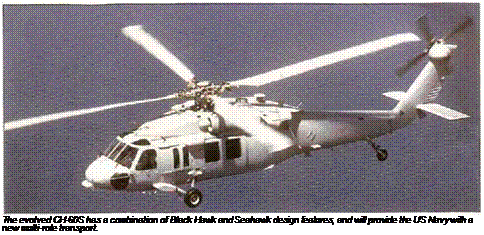
Sikorsky’s navalisod S-70B was developed to meet toe U$N’s LAMPS III requirement. This called for a he icopter capable of providing an over – the-horizon search ano strike capability for ASW frigates and destroyers, using radar, MAD, sonobuoys and ESM to detect its targets. A prototype YSH-60B f ew on 12 December 1979, followed by the first production SH-60B Seahawk in 1983. Retaining 83 per cent commonality with the UH-60A, it introduced airframe anti-corrosion treatment, T700-GE-4-01 engines, a folding tailboom. modified undercarriage and HAST (recovery assist secure and traverse) gear. Mission equipment comprises APS-124 ventral search radar, a 25-tube sonobuoy launcher, ASQ-81(V)2 towed MAD, and ALQ-142 ESM. with an armament of two Mk 46 torpedoes It has a hoist for the secondary SAR role. S-7GBs have been exported to Australia (with MEL Super Searcher radar), Japan, Spain, Thailand and Turkey.
The SH-60F Ocean Hawk variant performs the CVW (carrier-based) inner zone ASW mission. Initially deployed in 1991, it lacked radar and RAST but instead had AQS-13F dipping sonar, FLIR and ESM and was armed with three Mk 50 torpedoes Greece received a hybrid version with SH-60B type radar, but with provision for dipping sonar and with
This Royal Australian Navy S-70B-2 wore a special scheme to mark the 50th anniversary of its squadron, the NAS Nowra-based HS 816.
SH-60F ESM. Taiwan bought 21 similar S-70CIMI-1 and S-70C(M)-2 Thunderhawks. The SH-60F – oaseo HH-60H Rescue Hawk is the USIVs strike rescue platform, and entered service in 1989. It has a secondary covert SEAL team infil/exfil roie,
Some 273 of the Navy’s SH-60Bs, SH-60Fs and HH-60Hs are being re-manufactured to a common SH-60R standard, optimised for littoral operations with new passive and active detection and ECM systems, including a new AN/APS-147 ISAR radar, and new sonar equipment. The MAD is deleted, and computer and navigation systems are replaced The prototype flew on 22 December 1999.
The CH-60S is a new-buiid multi-role VERTREP, SAR and CSAR derivative of the Seahawk, intended to replace the HH-60H, CH-46 and HH-3. It combines a UH-60L fuselage with the dynamics system, folding rotors and tailboom and other features of the SH-60B. The aircraft will aiso have a glass cockpit (also being adopted for the SFI-60R) and flew in prototype form on 6 October 1997.
The USCG’s SAR HH-60J Jayhawk replaced the Sikorsky HH-3F in the SAR, patrol and smuggling interdiction roles, and featured a search/weathei radar, a searchlight, an NVG-compatible cockpit and an optional fuel tank.
![]()

|
Soviet Union (Russia) Tacticaf strike/attack aircraft
|
|
T |
o improve the payload/range and STOL capability of the Su-7, Sukhoi built an improved derivative with a variable-geometry (‘swing’) wing. The result was the Sukhoi S-22I (Su-7IG Titter-ЁГ) prototype flew on 2 August 1966. The production Su-17M Fitter-C’ introduced the 109.83-kN (24,690-lb) AL-21F-3 engine and a new nav/attack system. A handful of ‘Fitter-Cs’ were built for reconnaissance duties, with provision for multi-sensor reconnaissance pods as Su-17Rs. All ‘Fitter-Cs’ have been retired from use in Russia, and Poland, and similar export aircraft (designated Su-20) delivered to Afghanistan, Algeria. Angola, Egypt, Iraq, North Korea, Syria and probably Vietnam are all also believed to have been retired.
The Su-17M-2D ‘Fitter-D’ introduced a lengthened, drooping nose and revised avionics. The ranging radar was replaced by a laser ranger and Doppler was added below the nose, A sanitised, less-sophisticated version, the Su-17M-2K ‘Fitter-F’, was built for export to Angola, Libya and Peru. These aircraft were powered"by Tumanskii R-29BS – 300 engines. A handful remain active in Peru, upgraded with new avionics and refuelling probes.
The Su-17UM-2D ‘Fitter-E’ was a two-seat trainer based on the Su-17M-2D airframe, but with no port cannon. Export Su-17UM-2Ks used the R-29BS-300 engines and aircraft were delivered to Afghanistan, Algeria, Angola, Iraq, Libya, Peru, Vietnam and North and South Yemen.
The Su-17M-3 ’Fitter-H’ for Frontal Aviation had a deepened forwaro fuselage, a tall tailfin and a removable ventral fin, like tne trainer, but with two wingroot cannon and a single cockpit. A dedicated AAM launch rail was added beneath each inner wing. It was supplied to Frontal Aviation and Afghanistan only. The similar Su-22M-3K ‘Fitter-J’ (with the Tumanskii R-29BS engine) was exported to Iran, Iraq, Libya, Peru, Syria, Vietnam and both Yemens, and remains in service with most of these operators. The Su-22UM-3K was a trainer based on the tall-tailed Su-17M-3 airframe, produced with Lyuf’ka and Tumanskii engines.
The final production variant, the Su-22M-4 ‘Fitter-K’ introduced new avionics and compatibility with an even wider range of weapons, and was distinguished by a small intake at the base of the tailfin. The type is in limited service with a number of former Soviet states, and in Angola, the Czech and Slovak Republics, and Poland. The Su-22M-4 was also exported to Afghanistan, and the former East Germany.
 Specification: Sukhoi Su-17M-4 ‘Finer-K’ Powerplant: cne 110.32-kN (24.B0?-!b) NPO Saturn ILyul’ka) AL-21F-3 afterburning turbojet Dimensions: wing span I3.80 m (45 ft 3 in) spread and 10 m (32 ft 10 in); length 18.75 m 161 ft 5» in): height 50 m (16 ft 5 in)
Specification: Sukhoi Su-17M-4 ‘Finer-K’ Powerplant: cne 110.32-kN (24.B0?-!b) NPO Saturn ILyul’ka) AL-21F-3 afterburning turbojet Dimensions: wing span I3.80 m (45 ft 3 in) spread and 10 m (32 ft 10 in); length 18.75 m 161 ft 5» in): height 50 m (16 ft 5 in)
Weights: normal take-off 16400 kg (36,155 lb), maximum take-off 19500 kg |42,989 lb) Performance: maximum level speed 1400 kmb (870 mphj; service ceiling 152D0 m (49,870 ft), combat radius 1150 km (715 miles) on a hi-lo-hi attack mission with a 2000-kg (4,409-lb) wariaad Armament: two wingroot-moonted NR-30 30-mm cannon with 80 rpg; maximum practical ordnance load 1000 kg (2,205 lb) plus drop tanks
Russia
Bomber, EW, reconnaissance aircraft
|
|
T |
he Su-24 (NATO code-name ‘Fencer’) was intended as an all-weather low-level supersonic □omber able to attack fixed and mobile targets with pinpoint accuracy and with a secondary photographic reconnaissance role. It was developed from the unsuccessful T-6-1 delta-winged VTOL bomber prototype, which had separate cruise and lift engines’ The heavy lift jets were removed to leave space for fuel or weapons and a variable-geometry wing was added to produce the T-6-2IG prototype, which made its maiden flight during May 1970.
The production Su-24 ‘Fencer-A’ was powered by a pair of Perm/Soloviev AL-21F-3 turbofans. The Su-24 ‘Fencer-B’ had an extended-chord tailfin giving a distinctive ‘kinked’ tailfin, and introduced a heat exchanger above the fuselage. Late-model ‘Fencer-Bs’ had a refined rear fuselage {more closely following the jet pipes), and a brake chute fairing below the rudder. The Su-24 ‘Fencer-C’ had triangular RWR fairings on the sides of the fin-tip and on the engine intakes,
The improved Su-24M ‘Fencer-D’ attack variant entered service in 1986 and introduced a retractable IFR probe above the nose, an upgraded avionics suite and provision for a UPAZ-A buddy refuelling pod. Its shortened, reshaped redome
The Su-24M ‘Fencer-D’ is the second-generation strike/attack version of the Su-24. It has a new naviattack fit and a laser/TV targeting system.
houses Orion-A forward-looking attack radar and Relief TFR. The Keira 24 laser and TV sighting system gives compatibility with the newest Soviet TV – and laser-guided ASMs.
Soviet Su-24 bombers could carry free-fall TN – 1000 and TN-1200 nuclear bombs, and a variety of conventional free-fall bombs and guided ASMs. ‘Fencer-Bs’, ‘-Cs’ and ‘-Ds’ remain in widespread front-line use witn Russia, and with a number of former Soviet states. Belarus is reported to have sold eight aircraft to UNITA in Angola. Downgraded, non-nuclear capable export Su-24MKs have been delivered to Algeria, Iran, Iraq, Libya and Syria. The 24 Iraqi aircraft That fled to Iran during the 1991 Gulf War, were absorbed by the IIAF.
The Su-24IVIR ‘Fencer-E* tactical reconnaissance aircraft uses internal and podded sensors of various types, and is able to transmit data from some sensors to a ground station in real time. The Su-24MP ‘Fencer-F’ is believed to have a primary Elint – gathering role and is similar in appearance to the Su-24MR. It can be distinguished from the earlier aircraft by a prominent undernose fairing below the nose and swept-back intake-mounted ‘hockey stick’ antennas. The Russian air force is now examining a range of Su-24 upgrade options.
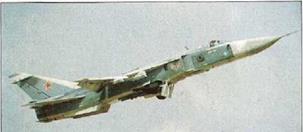
|
|
|
T |
he Su-25 was developed during the late 1960s, as a jet shturmovik, using the tried and trusted weapons system of the Su-17M-2. A prototype flew on 22 February 1975 with RD-9 engines and a depressing GSh-23 cannon under the nose. Further prototypes introduced the R-95Sh turbojet (a non – afterburning version of the MiG-21 ‘s R-13-300), a twin-barrelled AO-17 30-mm cannon and the upgraded weapons system of the Su-17M3.
The production Su-25 ‘Frogfoot-A’ introduced enlarged engine intakes and increased armour around cockpit and critical components, and was evaluated under combat conditions in Afghanistan led to the addition of bolt-on chaff/flare dispensers, and an exhaust IR suppressor. From 1987 the R-195 engine was introduced, as fitted to all two – seaters, and to 50 Su-25BM dual-role attack/target – towing aircraft. Single-seat Su-25 production ended in 1989, after 330 aircraft had been delivered, including export Su-25Ks ю Angola, Ви garia, Czechoslovakia, Iraq and North Korea, and, according to some reports, Afghanistan. Peru has recently taken delivery of a number of probabiy second-hand Su-25s, while Iran obtained ex-Iraqi aircraft curing the Gulf War.
The Su-25UB ‘Frogfoot-B’ trainer featured a lengthened fuselage with stepped tandem cockpits, and a taller tailfin. Similar Su-25UBKs were provided to export customers. The Su-25UT (later Su-28) had all armament and weapons systems removed
and was intended for the pilot training role with the VVS and DOSAAF. The Su-25UTG was a carrier trainer with strengthened undercarriage and hook.
ne Su-25T and Su-25TM (briefly the Su-34> are extensively modernised Su-25 derivatives – single – seaters based on the Su-25UB airframe, using the rear cockpit to house avionics and fuel. To give true night capaoility, the aircraft have new avionics, sensors and systems, including provision for podded radars or LLLTV/FLIR systems. Eight Su-25Ts were reportedly built for Frontal Aviation, plus a handful completed as Su-25TMs. The Russian air forces reportedly have an outstand ng requirement for 24 Su-25TMs to meet regional reinforcement and out-of-area requirements, while Georgia has a requirement for 50 aircraft. The export Su-25TK or Su-39 Strike Shield has also been offered to Abu Dhabi and Bulgaria.
In April 2001 Israel’s Elbit and Georgia’s TAM unveiled the Su-25 Scorpion upgrade, maturing a modernised cockpit with two MFDs, HUD and a new weapons delivery and navigation system.
 Specification: Sukhoi Su-25K Trogfoot-A’ Powerplant: two 44.13-kN |9,921-lbj MNPK ’Soyuz’ ITunianskii] R 195 turbojets Dimensions: wing span 14.30 n (47 f11.4 in); length 15.53 m [50 ft 1VA in); height 4.80 m (15 ft 9 in)
Specification: Sukhoi Su-25K Trogfoot-A’ Powerplant: two 44.13-kN |9,921-lbj MNPK ’Soyuz’ ITunianskii] R 195 turbojets Dimensions: wing span 14.30 n (47 f11.4 in); length 15.53 m [50 ft 1VA in); height 4.80 m (15 ft 9 in)
Weights: empty equipped 9500 kg (20,944 lb); maximum take-off 17Б0С kg (33,ВСІ Ibl Performance: maximum level speed ‘clear’ at sea level 975 kmh (BOB mph); service ceiling /GDI] m |22.9Bb ft); combat radius 550 km |34? miles) nn hi-ln-hi attack mission with a 4000 kg (3.818-lb) warload and two drop tanks Armament: one 30-mm A0-17A cannon with 250 rounds; maximum ordnance 440C кц (9,700 lb)
Russia
Air superiority fighter, long-range interceptor
|
|
S |
ukhoi began work on a new long range heavy fighter for Frontal Aviation in 1969. This was to be a highly manoeuvrable aircraft, with long range, heavy armament and modern sensors, capab e of intercepting low-flying or high-level bombers, and of out-fighting the F-15. The requirement was re-drafted to cover two separate but complementary Designs, one heavy and with a long range, and the other a cheaper, lower cost tactical fighter.
Sukhoi was awarded a contract to develop the heavy aircraft, as the T10, The T10-1 ‘Flanker-A’ prototype flew on 20 May 1977, but testing revealed serious problems and the type underwent a total redesign. Four TIQs (TIQ-I to -4) were built in the OKB’s own workshops, and five more (T10-5, -6. -9. -10 and -11) at Komsomolsk. The planned seventh prototype (T10-7) was completed as the T10S-1 ‘Flanker-B’ with a redesigned wing, undercarriage and fuselage, and a spine-mounted airbrake, and flew on 20 April 1981. An early T10S was stripped and lightened and fitted with uprated engines. As the P-42 this aircraft set a series of time-to-height records between 1986 and 1988. The new configuration formed the basis of the production Su-27 ‘Flanker-B’, which entered service in 1985, and was officially ‘accepted’ in 1990.
The ‘Flanker-B’ has an advanced pulse-Doppler radar, backed up oy a sophisticated EQ complex with an IRST system and a laser rangefinder. This allows the Su-27 to detect, track and engage a target without using radar. The Su-27 is also compatible with a helmet-mounted target designation system. The prototype Su-27UB ‘Flanker-C’ trainer featured a lengthened fuselage with stepped tandem cockpits under a single canopy and increased height/area tailfins and airbrake and flew on 7 March 1985.
About 600 Su-27s have been built, and 567 were estimated to be in service by the end of 1999. About 395 of these were in service with the Russian air forces, serving with Frontal Aviation and The PVO atr defence force. Most of the remainder served in small numbers with former Soviet republics, including Armenia, Azerbaijan, Belarus, Georgia, Ukraine, Uzbekistan. Some of these aircraft have been sold on, to Angola, and Ethiopia. Fifty new-build export Su-27SKs and two-seat Su-27UBKs have been delivered to the People’s Republic of China, where 200 more are to be built under licence by Shenyang as the J-11. The first Chinese-built Su-27 flew in December 1998. Some 12 aircraft have also been delivered to Vietnam.
 Specification: Sukhoi Su-27 ‘Flanker-B1 Powerplant: two 122.58-kN (27,557-lb) NP0 Saturn (Lyul’ka) AL-31F turbafans Diin elisions: wing span 14.70 nn (48 ft 2 ‘A in): length 21.935 m (71 It 11 /fin) Excluding probe; height 5.932 m (19 ft 5)? in)
Specification: Sukhoi Su-27 ‘Flanker-B1 Powerplant: two 122.58-kN (27,557-lb) NP0 Saturn (Lyul’ka) AL-31F turbafans Diin elisions: wing span 14.70 nn (48 ft 2 ‘A in): length 21.935 m (71 It 11 /fin) Excluding probe; height 5.932 m (19 ft 5)? in)
Weights: empty 17700 <g {39.021 lb}: maximum take-off 30000 kg 165,138 lb) Performance: maximum ‘eveI speed 2500 kmli (1.553 mph); maximum rate of climb at sea level 183ІЮ m (60,039 ft) per minute; service ceiling 18000 m (59,055 ft): combat radius 1500 km (932 miles) with four AAMs Armament: one 30-mm GSh-30-1 cannon in starboard wingroot with 150 rounds: maximum ordnance 6000 kg (13,228 lb) no
Russia
Advanced strike fighter
|
|
T |
he Su-27PU (later Su-30) was designed to fulfil a long-standing requirement for a long-range fighter-interceptor to replace the Tu-128 in defending Russia’s northern frontiers. The basic Su-27’s long range was further Improved through the use of inflight refuelling, (the aircraft being fitted with a retractable AAR prone), long range navigation equipment was provided and systems were tested and proved for long endurance use. The IA-PVO received about five Su-27PUs before production was halted by funding constraints, and the type was marketed to export customers as the Su-30K Sukhoi also designed and built a single-seat Su-27P with the same systems as the Su-27PU, but its single cockpit made it difficult to exploit the aircraft’s long endurance potential operationally, and none were delivered to frontline customers. At least one example was built to become the Su-30KI demonstrator, in anticipation of an Indonesian order. Two more long-endurance were delivered as aerobatic demonstration aircraft, as the Su-27PD
Sukhoi added limited air-to-ground capabilities to the two-seat Su-30 to produce the Su-ЗОМ <M for multi-role) marketing the aircraft to export customers as the SU-30MK Although a succession of aircraft appeared at international airshows in colourful ground attack camouflage colour schemes, festooned with dummy weapons, most of these were standard Su-27UB trainers, and it
took some time for the Su-30MK’s mult’-role avionics to catch up with the marketeers’ promises. Thus, when India took delivery (late) of eight Su-30MKIs in 1997 the aircraft were little more than probe- equipped Su-27UBs, and it will be some time before ground-attack capable aircraft are delivered.
China has ordered 60 of the baseline aircraft as the Su-ЗОМКК, and Chinese ‘Flanker’ production will switch to this version after the 80th Su-27SK. Vietnam has also ordered the type, under the simple designation Su-30K.
India’s full-standard Su-30MKIs are planned to be much more capable aircraft, with canard foreplanes, thrust-vectoring engines and advanced air-to-ground precision weapon capability. Sukhoi is now flying aircraft to this standard, but production deliveries are not yet imminent. Some sources expect this two-seat configuration (sometimes referred to as the Su-35UB or Su-37UB) to replace the vectored-thrust Su-37 single-seater as the Russian air forces’ next-generation ‘Super Flanker’ of choice.
|
|
|
|
|
|
|
|
W |
ith its long range and heavy load-carrying capability the Su-27 offered considerable potential as a tactica strike/attack aircraft, and as a replacement for the Su-24.The Su-27IB fighter bomoer began life as a carrier-based trainer aircraft for Su-27K pilots, initially Designated Su-27KU or Su-27KM-2. By the time the prototype was rolled out, the slimmed down carrier programme had removed the need for a dedicated trainer, and the aircraft was redesigned as a fighter-bomber under the new designation Su-27IB. lt first flew on 13 April 1990. The aircraft combined canard toreplanes with a new forward fuselage accommodating a side-by-side two-seat cockpit, with a titanium armoured cockpit, armoured glass, and three large CRT displays. The broad, flat, ‘duck-nose’ led to the Su-27lB’s unofficial ‘Platypus’ nickname, and accommodated a new Leninetz B-004 multi-function radar with з fixed phased array antenna, The intakes were redesigned *or higher low-ievel speeds
The prototype was followed by four aircraft built to the plannee production standard, with twin – wheel main undercarriage bogies, and a raised, thickened tailsting housing a rearward-looking tail warning radar. The first of these productionised Su~27!Bs (designated Su-34s by the OKB) flew on
18 December 1993, l or long range missions the aircraft had a lavatory and a galley, with room for the crew to stand upright or tie prone between the seats, A retractable IFR probe was also provided, together with ejection seats incorporating a ’back massage’ function.
Development of the Su-27IB has been slow, due to funding and technical problems, and the planned in-service date of 1998 slipped by virtually unnoticed. There is still an aspiration for the Su-27IB to replace all Russian air forces’ Su-24s (although not by 2005 as once announced). The programme is progressing slowly, and has not been cancelled. Production Su-27IBs are expected to use more powerful 175-kN (39.240-lb) Saturn AL-41F engines.
The aircraft was marketed as a dedicated maritime attack aircraft under the designation Su-32FIM (using the th’rd pre-production Su-27IB as a demonstrator), and as a multi-role export aircraft as the Su-32MF
The basic side-by-side Su-27IB airframe now forms the basis of the Su-33UB (or Su-27KUB) carrier trainer, an Su-30-2 long range interceptor, and as yet undesignated recce and EW variants. The prototype Su-27KUB trainer made its maiden flight on 29 April 1999.
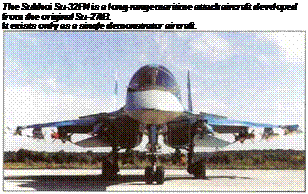 Specification: Sukhoi Su-271B Powerplant: Two 130.43-kN (29.320-lb) Lyul’ka AL-31FM (AL-35F) turbcfais Dimensions: wing span ‘4.70 m (48 ft 2У – in); length 23.335 m 176 ft 6’A in) excluding probe; height 6,5 m (71 ft 4 in)
Specification: Sukhoi Su-271B Powerplant: Two 130.43-kN (29.320-lb) Lyul’ka AL-31FM (AL-35F) turbcfais Dimensions: wing span ‘4.70 m (48 ft 2У – in); length 23.335 m 176 ft 6’A in) excluding probe; height 6,5 m (71 ft 4 in)
Weights: maximum take-off 451 DO kg 93/28 lb)
Performance: maximum level speed clean’ at 11000 m (36.090 ft) 1.900 kmh (1.180 mph) and at sea level 1,400 kmh 1870 mph]; service ceiling 19800 m 165.000 ft), combat radios 1,113 km (691 miles) on a hi-hi-tn mission Armament: One 30-mm GSb-30-1 cannon, maximum ordnance 8000 kg (17,636 lb)
|
|
T |
he Su-27M ‘Flanker’ was designed to meet the same Frontal Aviation requirement that spawned the MiG-29M, for a multi-role tactical fighter to rep ace existing first-generatior MiG-29s. Based on the existing Su-27 airframe, the Su-2/М had a higher proportion of carbon fibre composites and aluminium-lithium alloys in its airframe and had minor airframe improvements, including a reprofiled forward fuselage and (on most aircraft) twin nosewheels and taller, square-topped tailfins with integral fuel tanks.
More obviously, the aircraft had canard foreplanes and a new quadruplex digital FBW control system (though the early prototypes retained the original analogue system). Canards were first used on the proof-of-concept T-10-24 (first flown during 1982) and on the navalised. carrierborne Su-27K (later re-designated Su-33). The carrierborne ‘Flanker’ also featured folding wings and tailplanes, strengthened undercarriage and an arrester hook, but retained the original F8W control system and weapons system of the basic Su-27, The new Su-27M, by contrast, had new multi-role avionics, an advanced glass cockpit, new defensive systems and an N011 Zhuk radar. Ths first of six prototypes made its maiden flight on 28 June 1988.
The aircraft was re-designated as the Su-35 by the Design Bureau in the early 1990s. Although the type was once expected to enter service from 1995. Despite marketing it to a number of potential
customers Sukhoi has received no orders for the Su-35. Attention has now largely switched to Su-27 upgrades, and to the thrust-vectoring Su-37
The first Su-37 was the penultimate aircraft of six planned pre-production Su-27Ms, modified before delivery with a pair of thrust-vectoring Saturn/Lyulka AL-31FU engines, and a revised flight control system, with a sidestick controller and new throttle/nozxle control lever. It first flew (with nozzles locked) on 2 April 1996, and was joined by a second aircraft in mid-1998.
The decision was soon taken to abandon the non-thrust vectoring Su-35 and to concentrate on the Su-37, whose planned production version may have used the designation Su-37MR The new variant was to feature further improved avionics, including a new N011M radar with a fixed ohased array antenna. The Su-37MR was expected to enter service with the two-dimensional thrust-vectoring, AL-37FP engine, or the AL-37FU. A three-dimensional thrust-vectoring AL-37PP engine is reportedly under development.
|
|
|
|











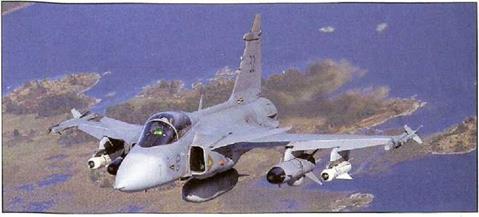



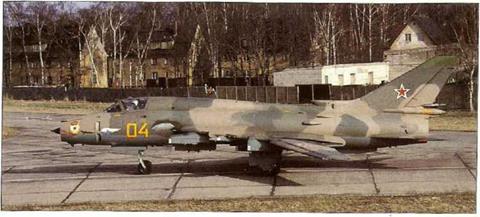
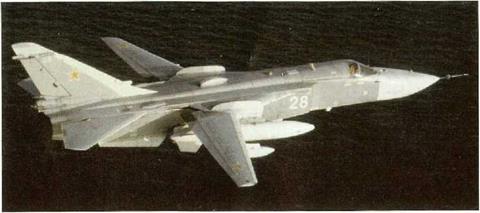
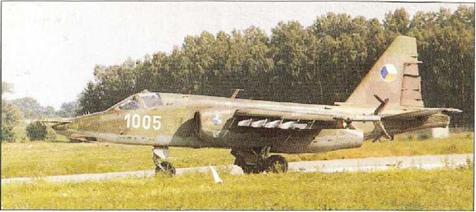
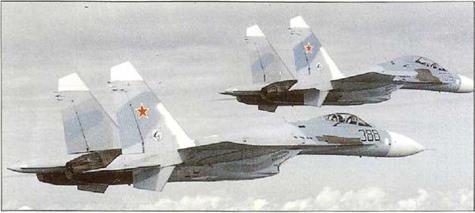
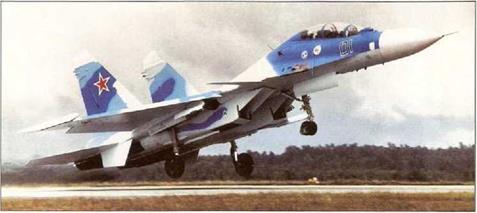


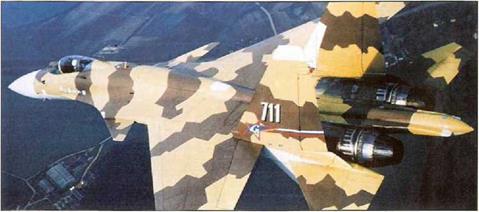
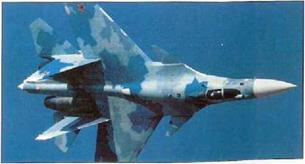
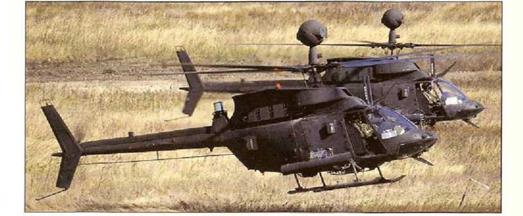
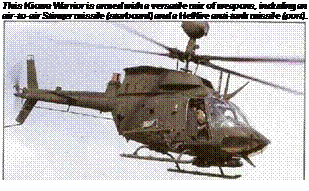 Specification: OH-MD(I) Kiowa Warrior Powerplant: one 435-kW (650-hp) Allison 250-C30R/3IT703-AD-7D0) turboshaft Dimensions: main rotor diameter 10.67 re (35 ft 0 ;n|; length overall, rotors turning 12.58 m (42 ft 72 in) ard fuselage 10.48 m (34 ft 4Kin); height overall 3.93 m (12 ft Ш in)
Specification: OH-MD(I) Kiowa Warrior Powerplant: one 435-kW (650-hp) Allison 250-C30R/3IT703-AD-7D0) turboshaft Dimensions: main rotor diameter 10.67 re (35 ft 0 ;n|; length overall, rotors turning 12.58 m (42 ft 72 in) ard fuselage 10.48 m (34 ft 4Kin); height overall 3.93 m (12 ft Ш in)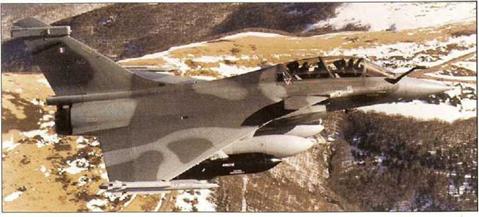
 Specification: Dassault Rafale C Powerplant: two 86.Э8 kM (19,555-le) SNECMA M88-2 turbofans Dimensions: wing span 10 fi m (35 ft 9/ in) with tip-mounted AAMs: ength 15.30 n (5C ft I/. in!: height’ 5.34 m (17 ft 6 A ir) Weights: empty, equipped 9060 kg (19.973 lb); maximum ta<e off 21530 kg (47,399 !b) Performance: maximum level speed ’dean’ 2125 krli {1,321 mph), combat radius 1055 km (655 m les) or an air-to-air miss on with eight Mica ‘Missiles and lour IjuI tanks Armament: one 30-mn GIATCITA 791В cannon in port engine intake trunking; 14 stores stations Icr maximum о: 8C0C kg (17,637 lb) af ordnance
Specification: Dassault Rafale C Powerplant: two 86.Э8 kM (19,555-le) SNECMA M88-2 turbofans Dimensions: wing span 10 fi m (35 ft 9/ in) with tip-mounted AAMs: ength 15.30 n (5C ft I/. in!: height’ 5.34 m (17 ft 6 A ir) Weights: empty, equipped 9060 kg (19.973 lb); maximum ta<e off 21530 kg (47,399 !b) Performance: maximum level speed ’dean’ 2125 krli {1,321 mph), combat radius 1055 km (655 m les) or an air-to-air miss on with eight Mica ‘Missiles and lour IjuI tanks Armament: one 30-mn GIATCITA 791В cannon in port engine intake trunking; 14 stores stations Icr maximum о: 8C0C kg (17,637 lb) af ordnance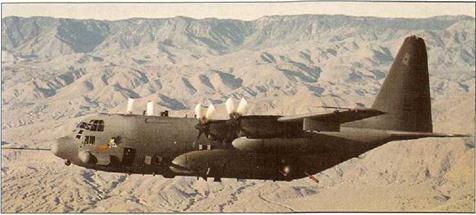

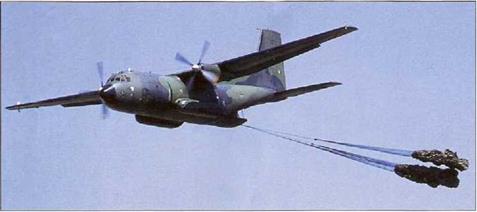
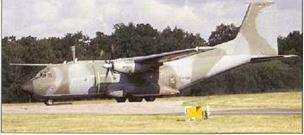 Specification: Transall C.160F/G Powerplant: two 4548-kW (6,1 DO-hp) Rolls – Royce Tyne RTy.20 Mk 22 turboprops Dimensions: wing span 40.00 m (131 ft 3 in); length 32.40 m (106 ft 3/ in); height 11.65 m (38 ft 5 in)
Specification: Transall C.160F/G Powerplant: two 4548-kW (6,1 DO-hp) Rolls – Royce Tyne RTy.20 Mk 22 turboprops Dimensions: wing span 40.00 m (131 ft 3 in); length 32.40 m (106 ft 3/ in); height 11.65 m (38 ft 5 in)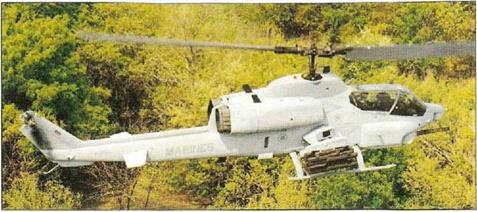
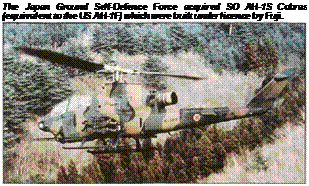 Specification: Bell Helicopter AH-IW Powerplant: two 1285-kW(1,723-shp>
Specification: Bell Helicopter AH-IW Powerplant: two 1285-kW(1,723-shp>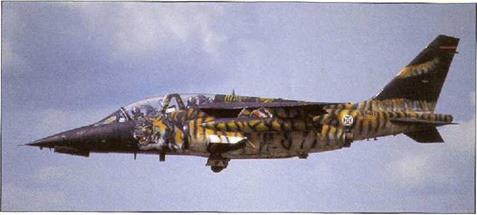


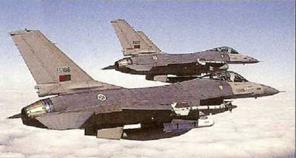
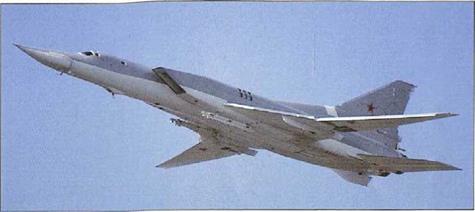
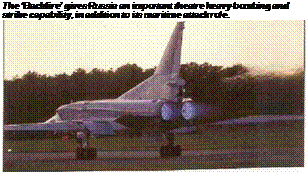 Specification: Tupolev Tu-22M-2 Backfire-B"
Specification: Tupolev Tu-22M-2 Backfire-B"